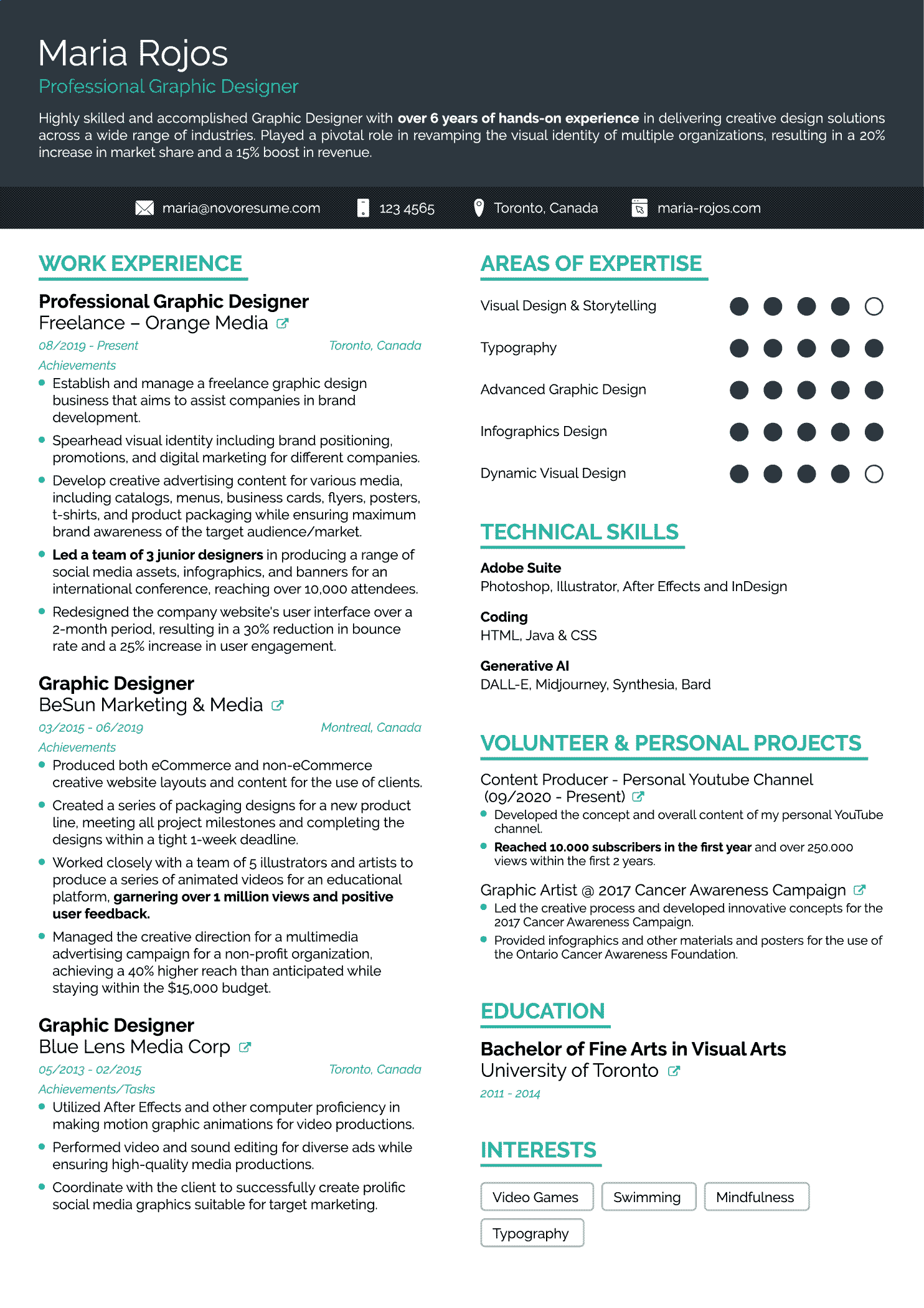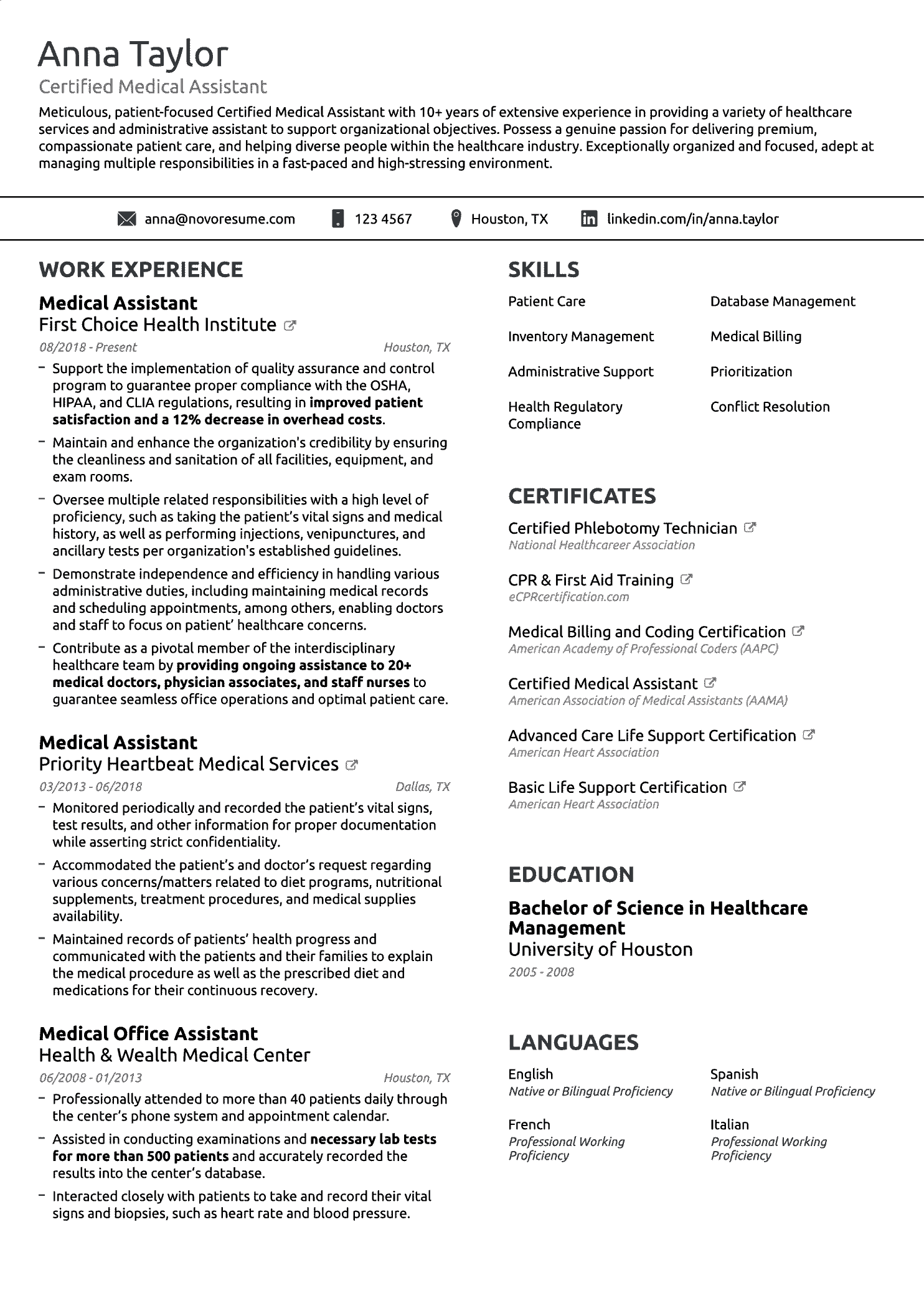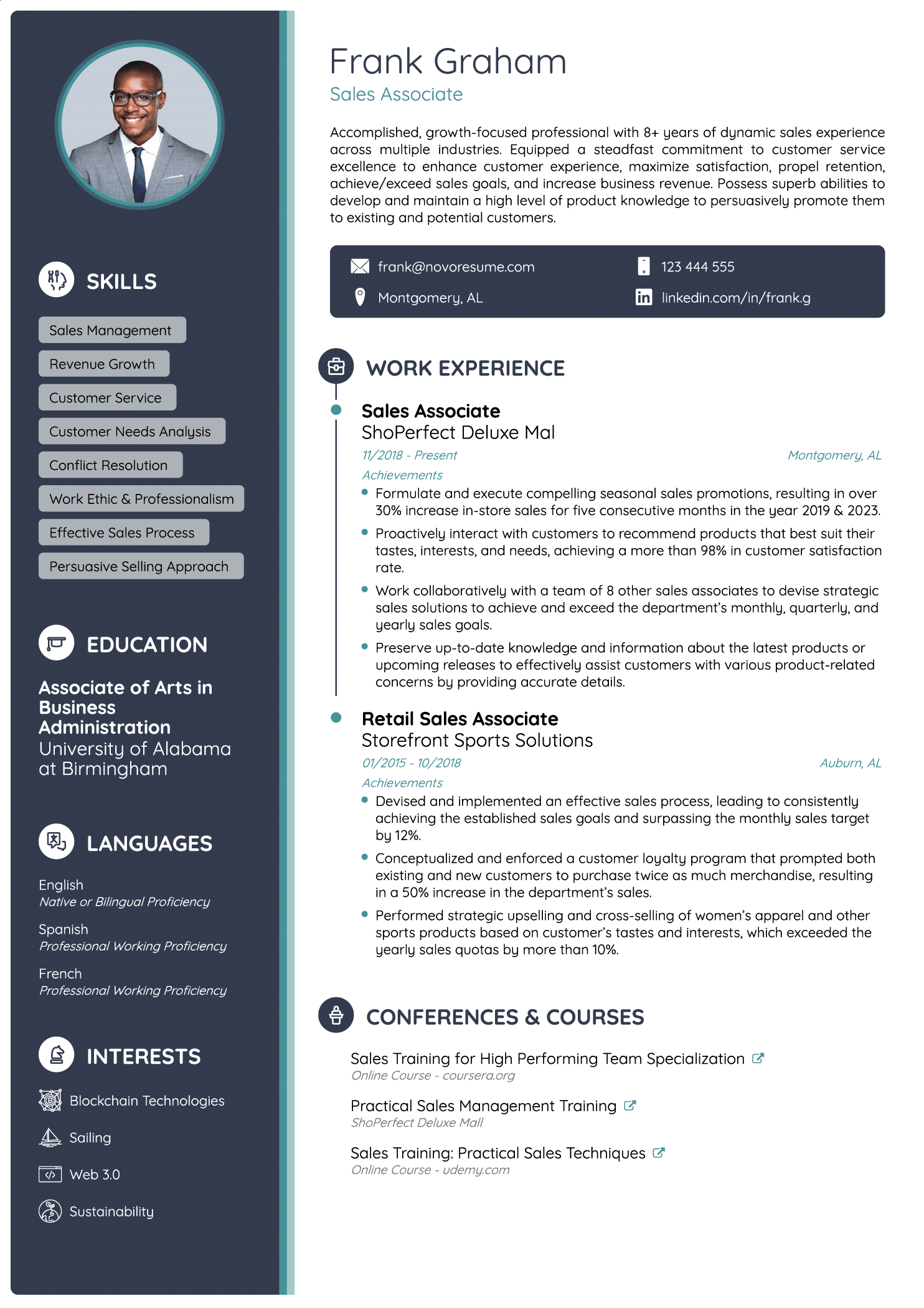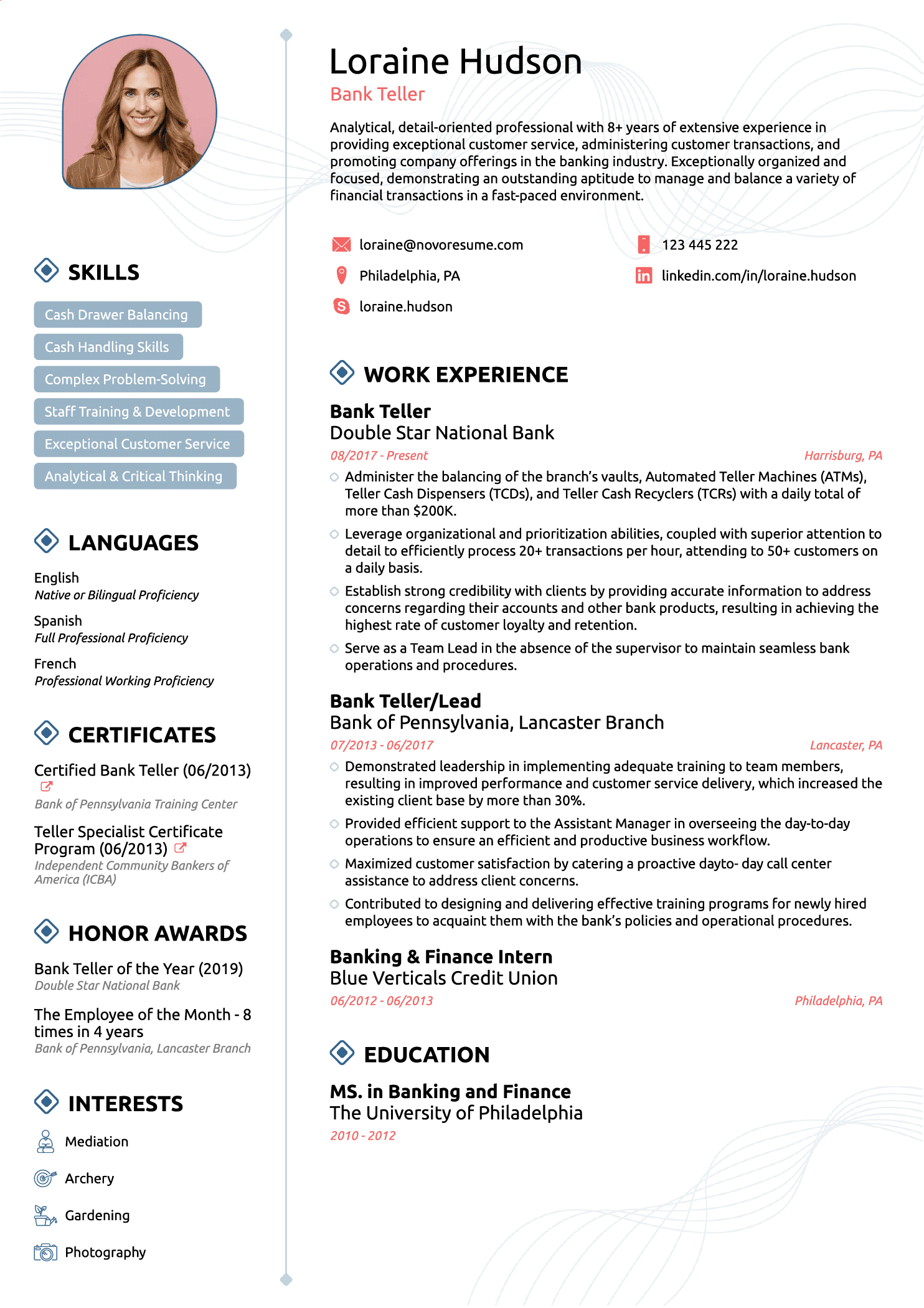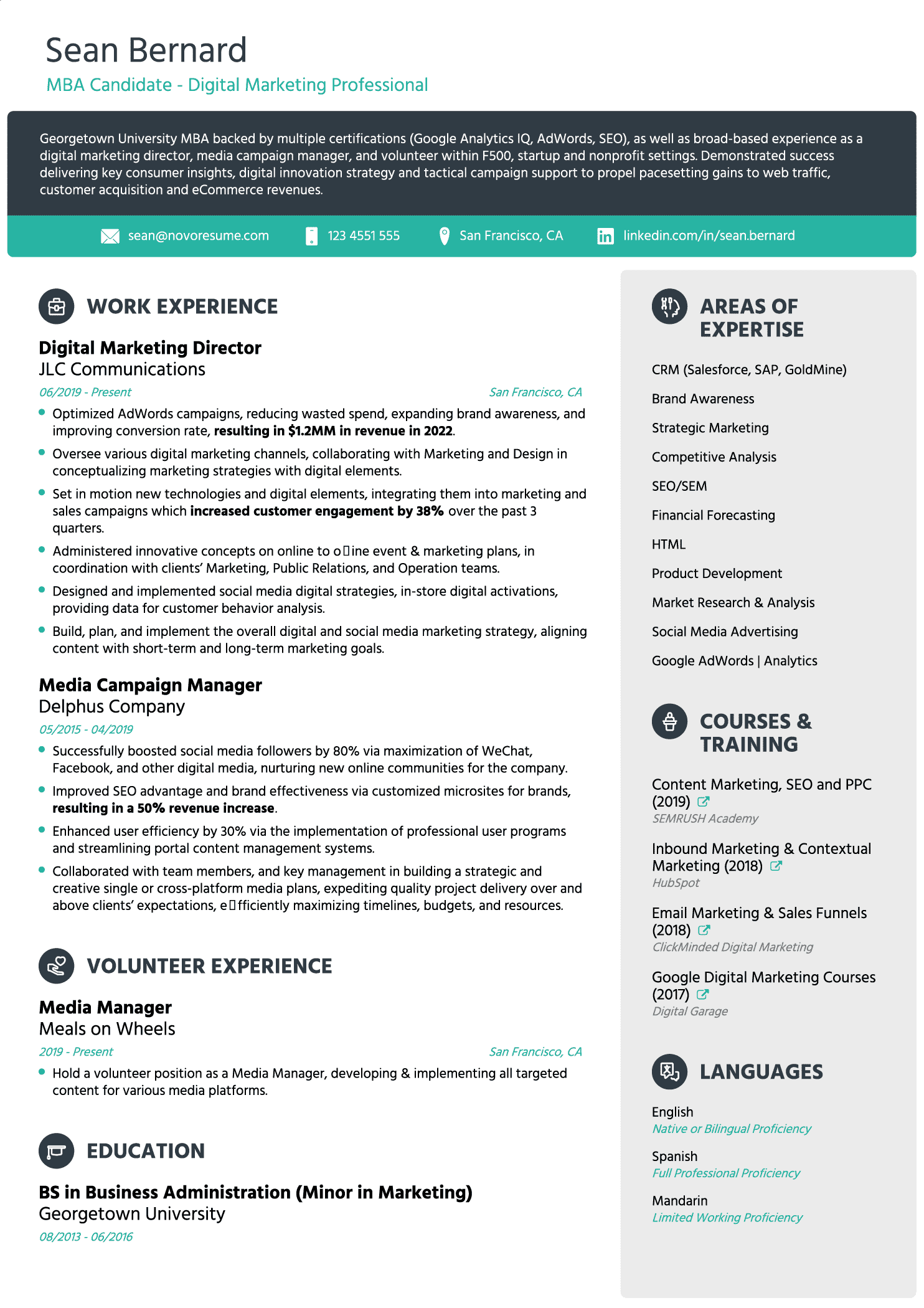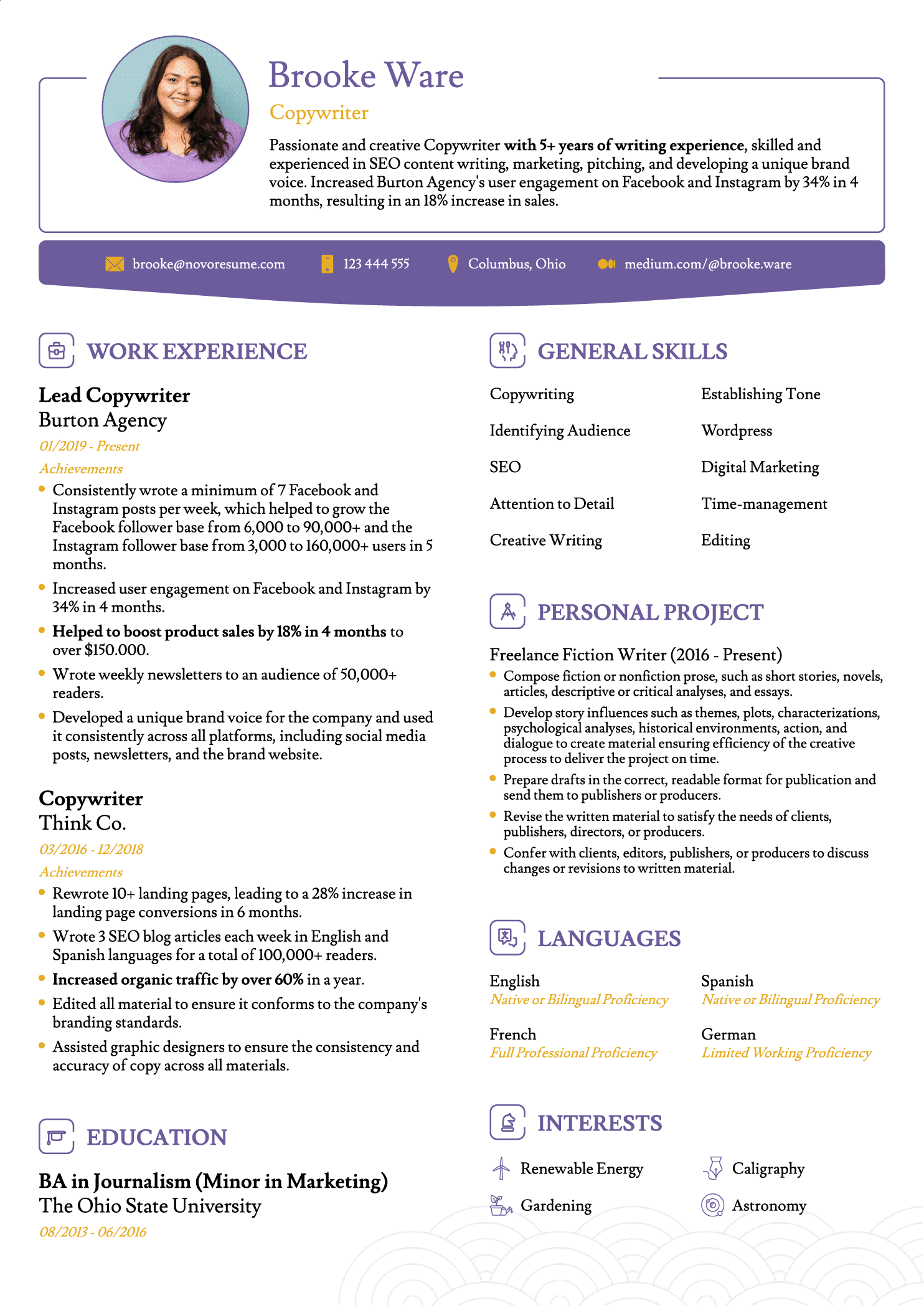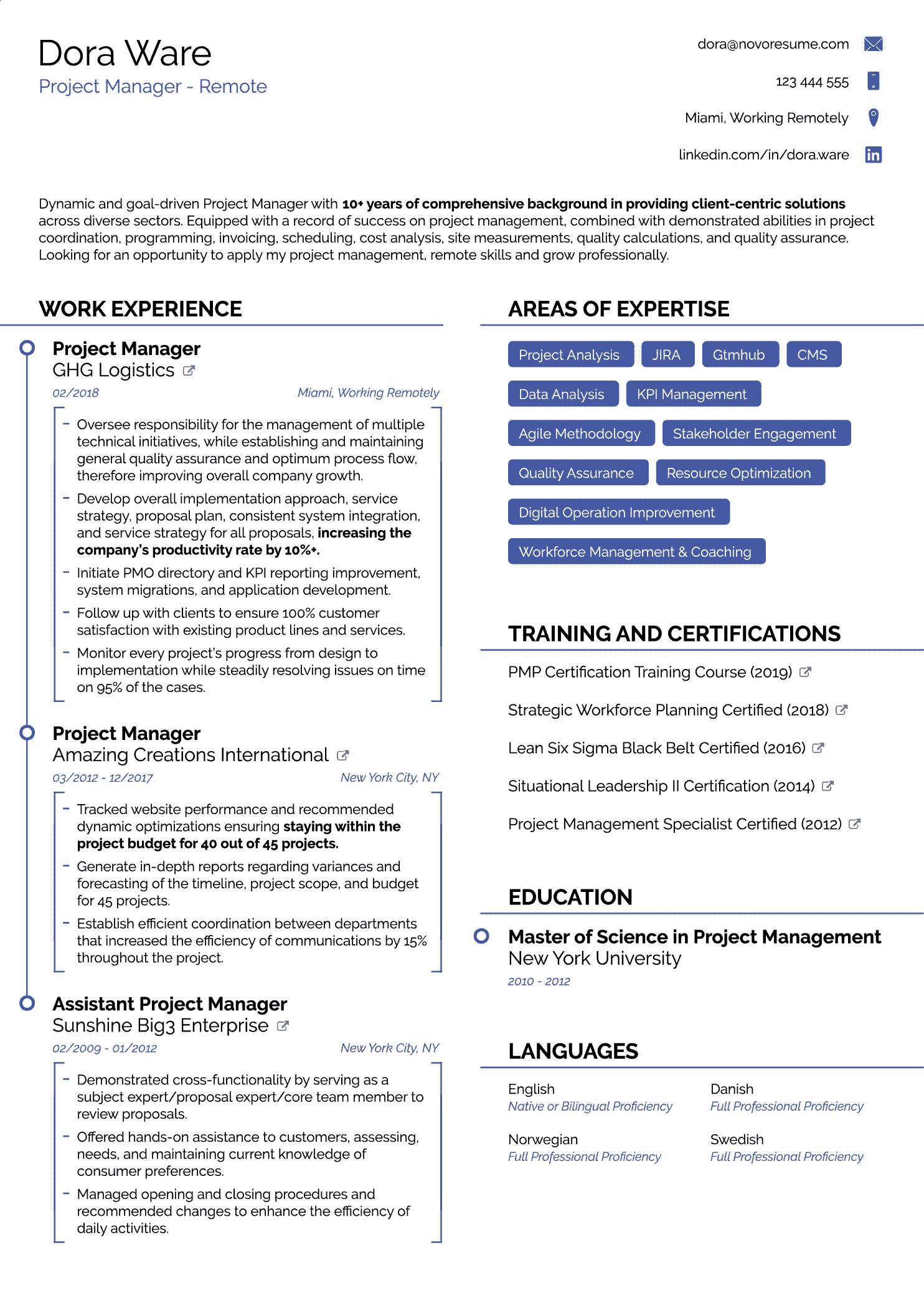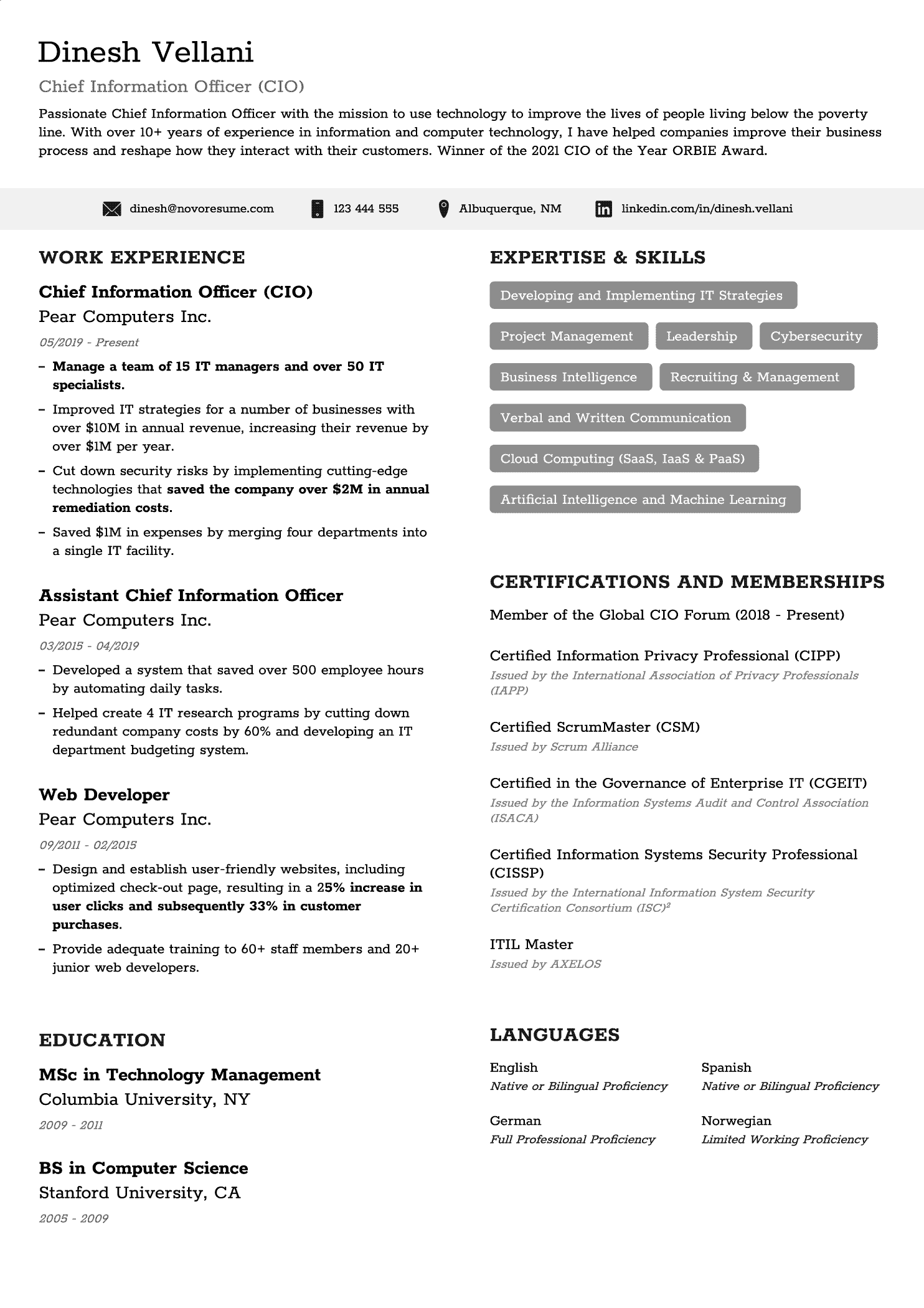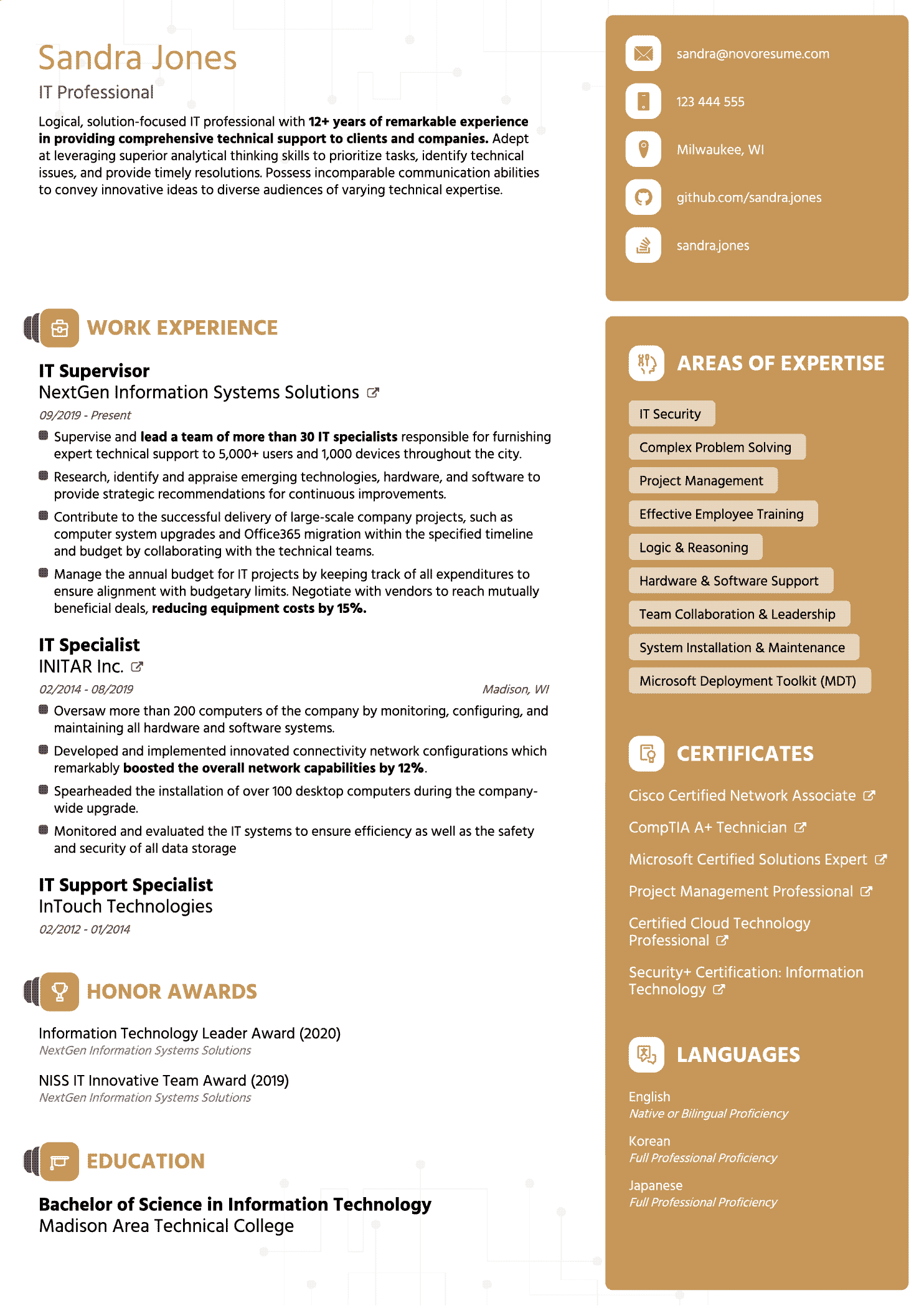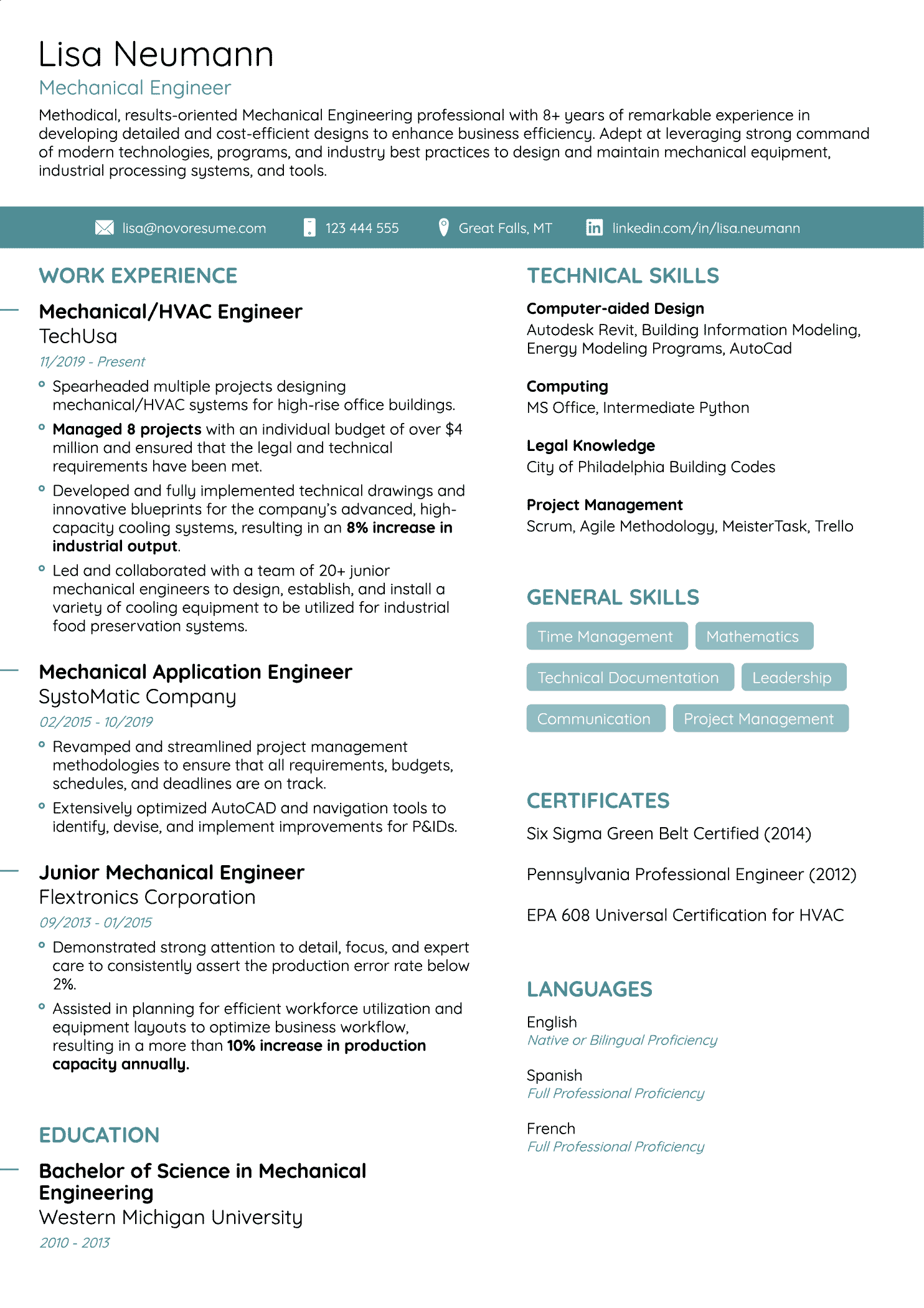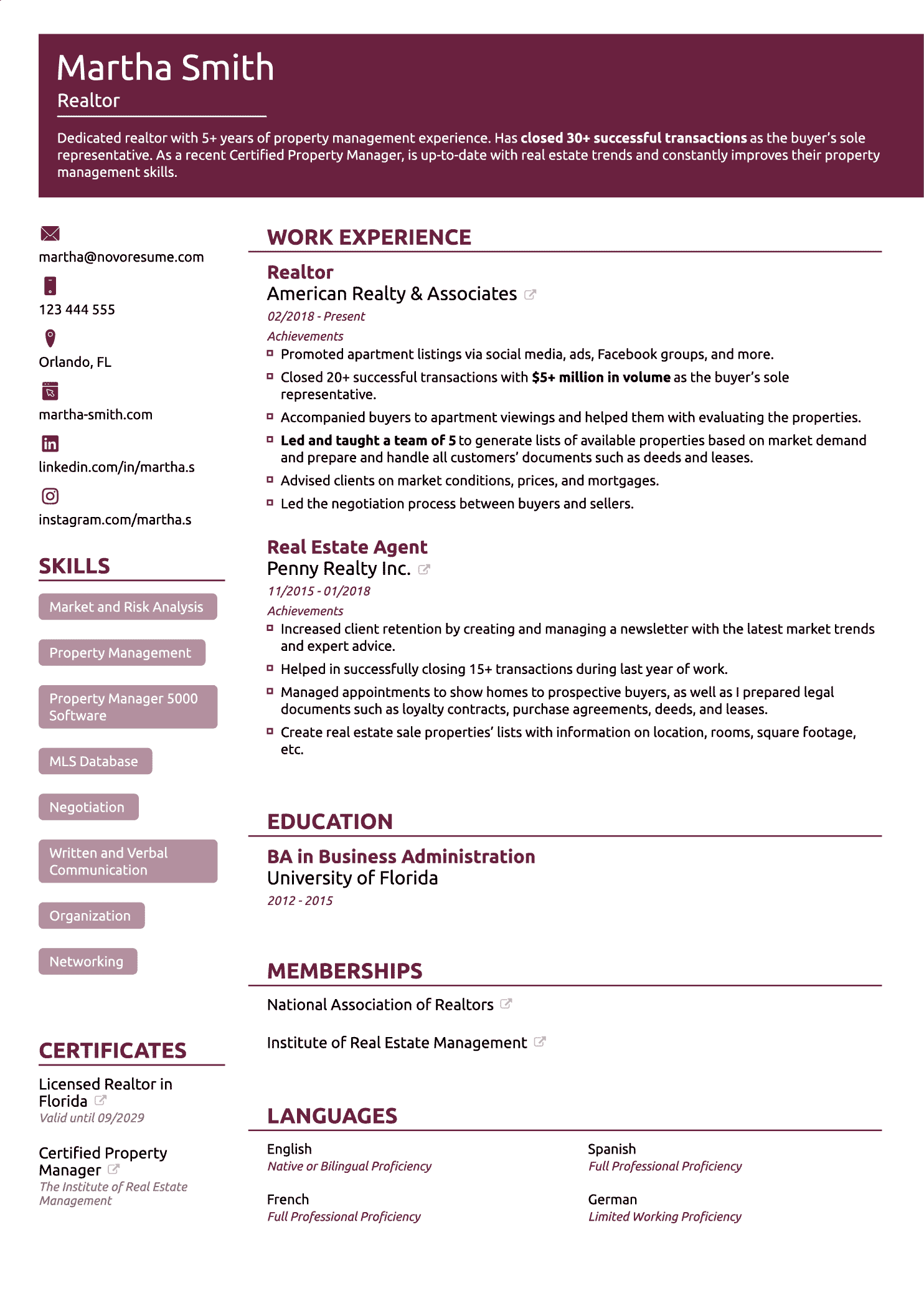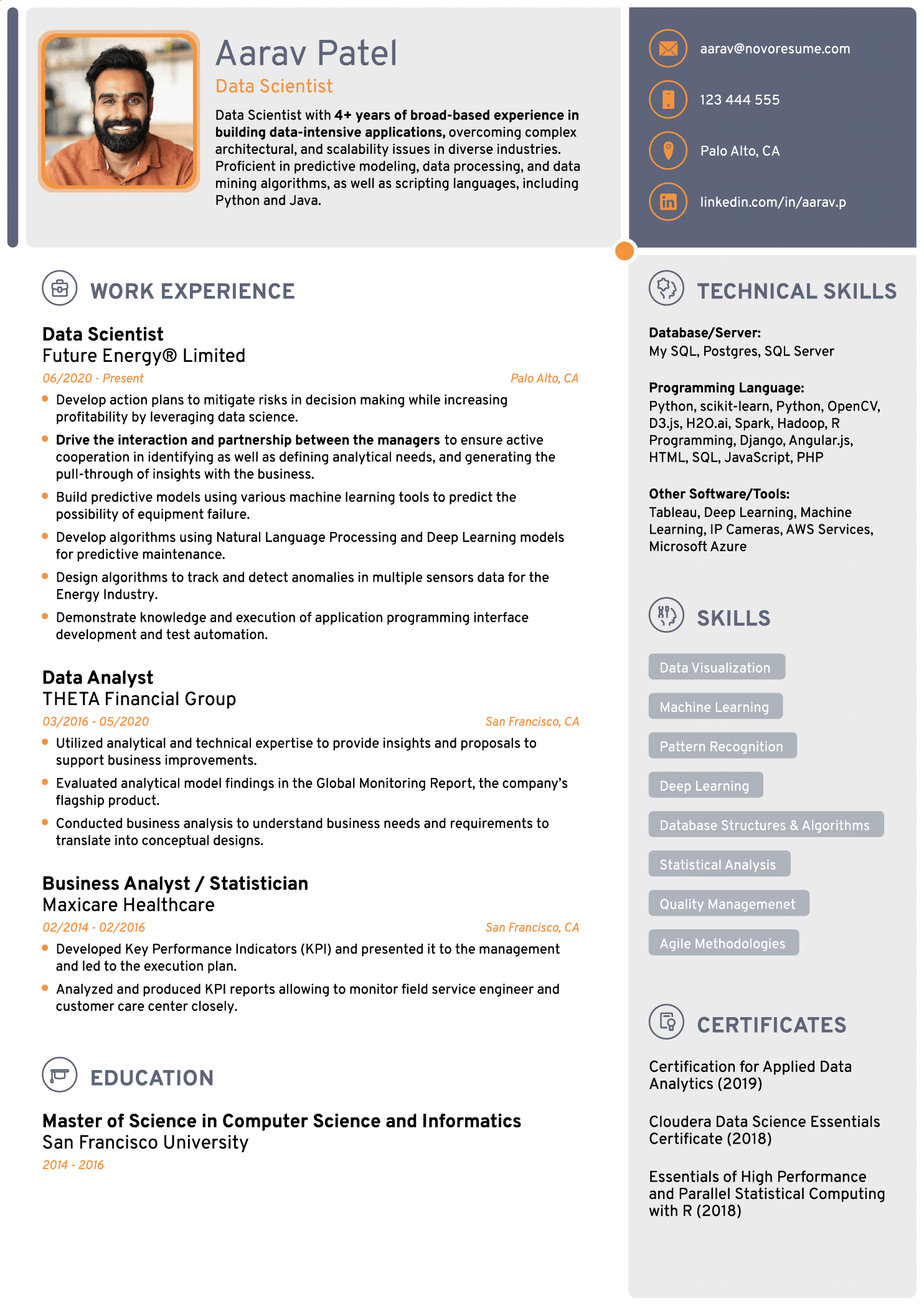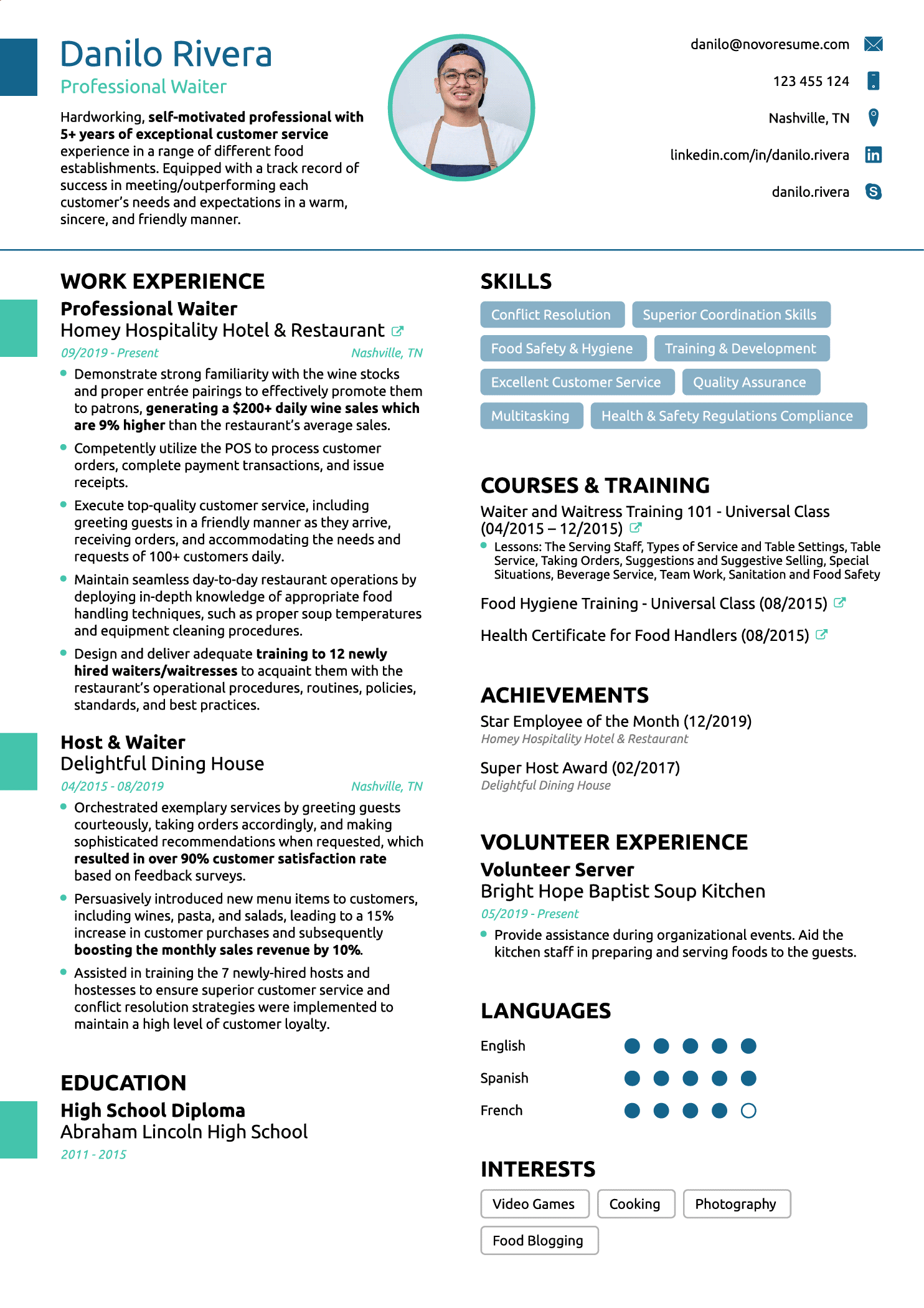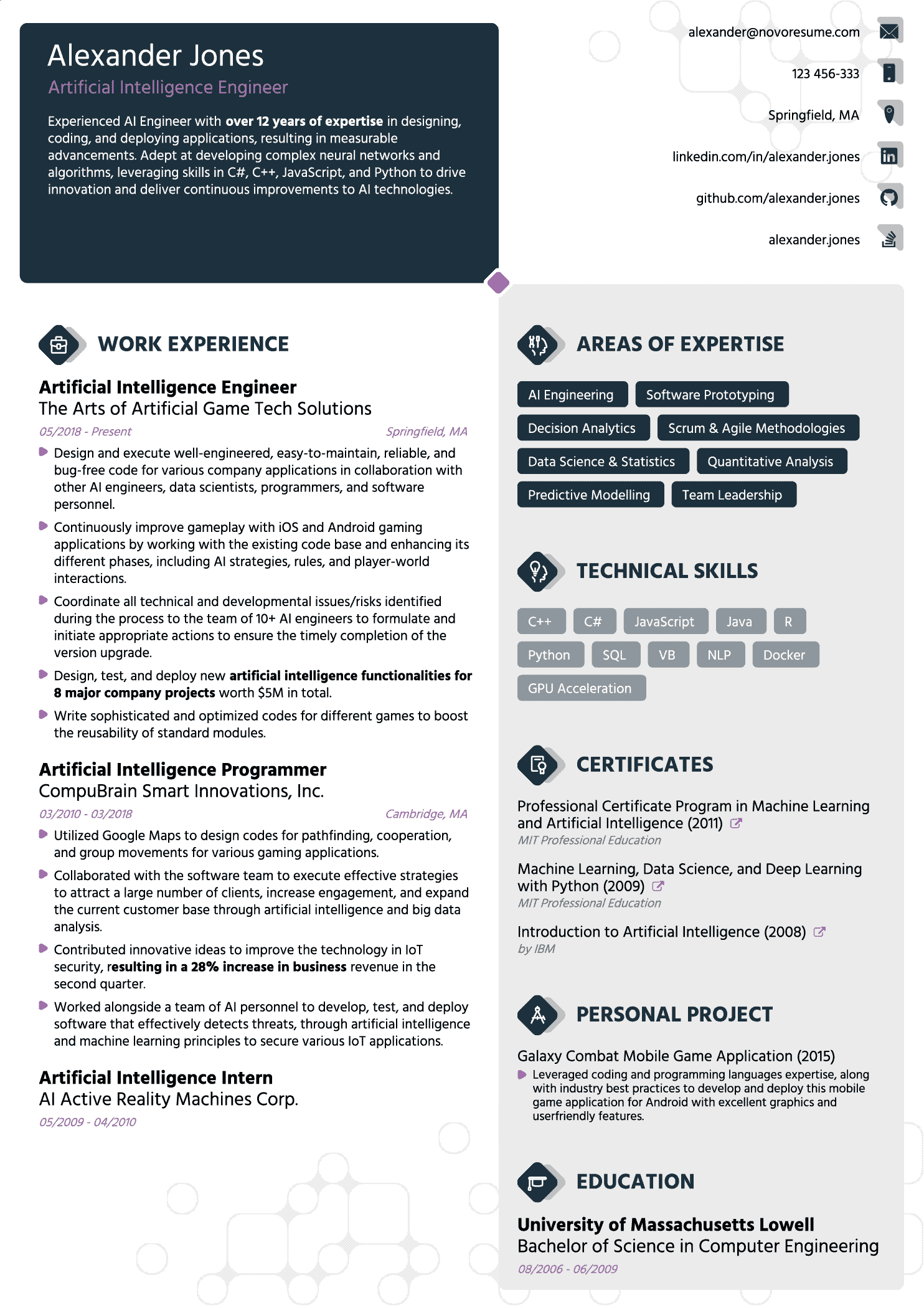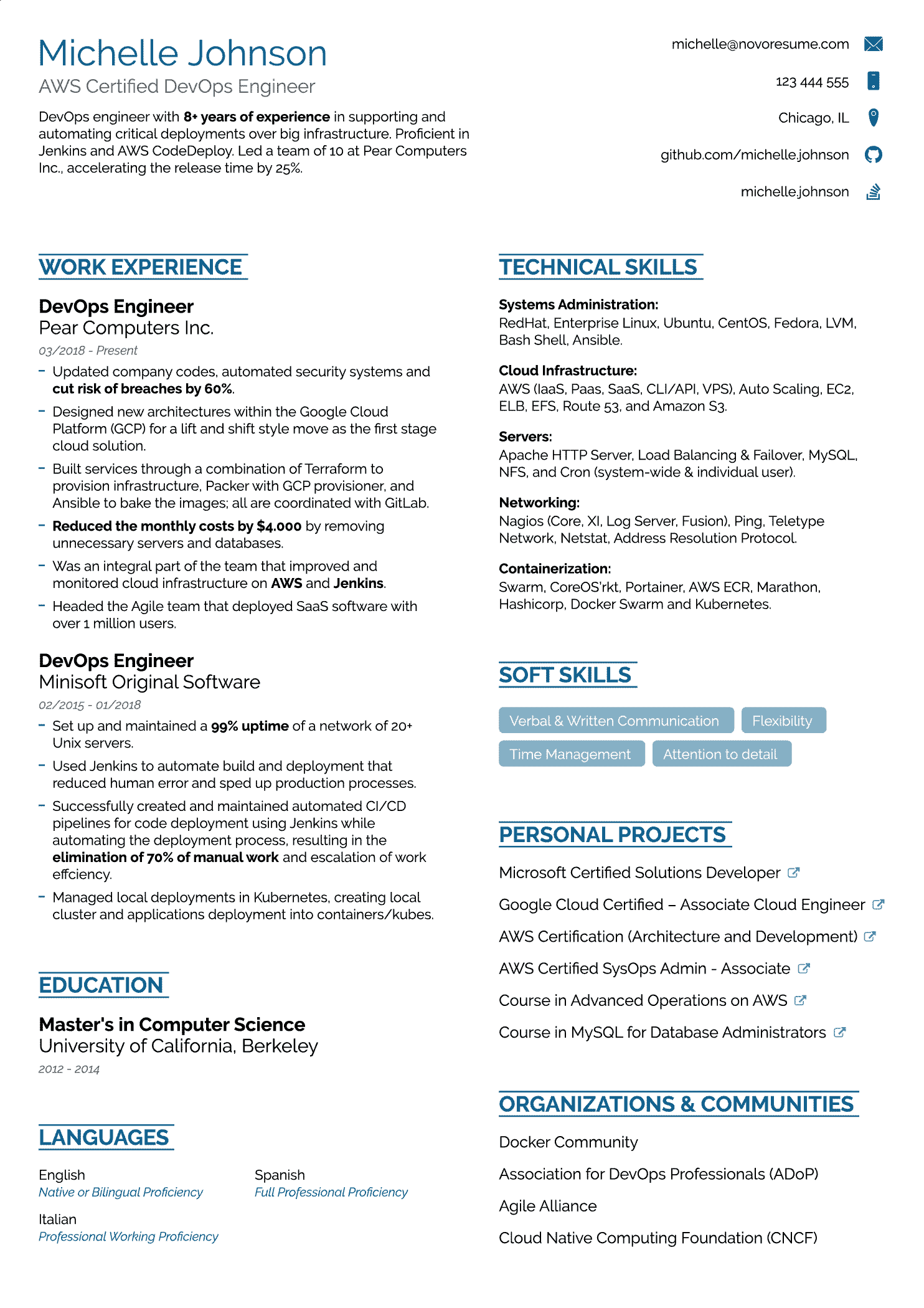Resume Templates
/ 0 - 5 years of experience
Why Novorésumé?
Free AND Premium
We offer both free and premium resume templates, so whatever your budget might be, you can still take advantage of our resume builder.
Creative & Professional Resume Templates
Whether you’re a creative advertiser looking for an outside-the-box creative resume template, or a banker seeking a more professional resume template, we’ve got a template for you!
NO Hidden Fees
If you’ve tried other resume builders, you’ve probably experienced this: You spend hours creating a resume, and when you click “download,” you get hit with a paywall asking you to subscribe.
At Novorésumé, we don’t do that. We have NO hidden fees - upgrade to Premium ONLY if you LOVE our resumes!
ATS Friendly
All Novorésumé resume templates are built with the most popular Applicant Tracking Systems (ATS) in mind. What this means for YOU is that whichever job you apply for, the CV filtering software they use will be able to read your resume (and NOT automatically discard it).
Expert Reviews
Oana Vintila
Career Counselor
For over 10 years now, I've been on both sides of the fence, career counseling, and recruitment, and let me tell you, the writer's block hits hard when it comes to drafting your resume.
Novorésumé not only offers you a smart and modern template for you to fill in, but their team has also crafted a winning combo of aesthetics and functionality that will inspire you to apply for the job you thought was out of your league. Give it a try!
Biron Clark
Former Executive Recruiter
Novorésumé is one of the few resume builders that I recommend online. Their resume templates are modern and eye-catching, and will grab an employer's attention. As a former Recruiter, if a candidate sent me a resume built with one of these templates, I would take notice and be impressed.
The software also makes it easy to enter your info and handles all of the formatting for you, so you can get your resume ready to send out as quickly as possible. I recommend these templates whether you're a recent graduate or experienced candidate.
Gabriela Tardea
Career Strategist, Coach & Trainer
When I consult people on resume writing, the most common question that I am asked it is about the content and what components to add or avoid, when they have less than 5 years of work experience.
On this platform, you not only have access to many options, but you get guidance on what to choose and why. When the work experience is less than 5 years, the other components such as languages, projects, volunteering experiences, hobbies etc, make a huge difference.
Resume Resources
What is a Resume?
A resume is a brief summary of personal and professional experiences, skills, and education history. Its main purpose is to show off your best self to potential employers.
When applying for a job, you’re (in most cases) going to be asked for a resume accompanied by a cover letter.
If you manage to create a “good” resume, you’re going to 2x your chances of getting hired. Want to learn how? Check out our complete guide on how to make a resume.
How to Write a Resume With No Experience?
The process of writing a resume might seem super scary to you. After all, most resume examples you see on the web are 80% about work experience. So, what the heck can you include in your resume if you have none?
Well, here’s some good news. If you’re applying for an entry-level job or an internship, no one expects you to have ANY work experience.
Instead, you should focus on what you DO have: education, projects, volunteering experience, hobbies & interests.
For a complete guide on how to make a resume with no work experience stand out, check out our article.
What to Put on a Resume?
The most common sections on a resume are:
Resume summary or objective
Work experience
Education
If you want to personalize your resume a bit more, you can also include the following sections:
Projects
Hobbies & interests
Portfolio
For more information on how to place these sections on your resume, check out our article on what to put on a resume.
How to Format a Resume?
Here are the three most popular resume formats:
Reverse-Chronological Resume
In 99% of the cases, you’ll want to go with the reverse chronological resume format. That’s the format most resumes you’ve seen follow - its main focus is your work experience, written down in reverse-chronological order.
So, unless you’re a student with no professional experience or a career changer, we’d recommend sticking with this format.
If you want to learn more about three resume formats, check out our comparison guide.
How to Write a Resume For a Student?
A good student resume takes advantage of the education section to highlight the candidate’s skills and qualifications.
So, the first thing you should do is talk about all your academic achievements, including any classes you’ve taken that are relevant to the position.
As a student, hiring managers don’t expect you to have extensive professional experience, so you don’t have to worry about the work experience section missing from your resume. Instead, you can focus on highlighting your extracurricular activities, any volunteering you’ve done, and your awards or certifications.
This student resume guide has all the information you need to perfect your resume and land your first real job.
How to Write a Resume For My First Job?
If you’re applying for your first job, chances are you don’t have substantial work experience. That’s fine - hiring managers expect that from entry-level positions.
First things first, go for the reverse-chronological format. Instead of writing a resume summary, use a resume objective to highlight your skills and career aspirations. If you have any work experience, do include it on your resume.
If not, you should put more focus on the following sections:
Internships, where you should focus on what you learned and achieved
Extracurricular activities, where you should highlight your role, responsibilities, and achievements.
Volunteering experiences, where you should mention the organization name, and relevant tasks and achievements.
Projects, where you talk about any personal projects you’ve worked on (that are also somehow relevant to the job you’re applying for).
Check out this guide on writing a resume with no experience to learn more about the topic and get inspired by real-life examples.
How Long Should a Resume Be?
Short answer: one page. If you're a seasoned professional with a lot of work experience that's relevant to the position, you can create a 2-page long resume MAX.
Long answer: check out our guide on how long should a resume be.
P.S. all of our templates are one page long, so you shouldn’t have a lot of trouble sticking to the one-page limit!
How to Write a Resume Summary?
Your resume summary is a “hook” that goes on top of your resume. Think of it as an introduction to the rest of your resume. It should, in 2-4 sentences, explain what your background is, and why it’s relevant for the position you’re applying for.
To learn more about how to create a resume summary that stands out, check out our guide.
How to List Work Experience on a Resume?
Work experience on a resume is one of those things that’s easy to learn but hard to master.
Each work experience entry should contain the following information:
Company name/description/location
Achievements or responsibilities
Dates employed
Now, if you want to create a work experience section that stands out, you want to make your achievements quantifiable. What this means is, instead of creating a responsibility-focused entry, like:
“Carried out sales operations.”
You list your achievements:
“Hit and exceeded monthly sales KPIs for 5 months in a row.”
This shows the employer that you’re not just a random candidate, you’re an A-player! To learn more about how to list achievements in your work experience (and land the job), check out our article.
How to List Skills on a Resume?
Simply create a ”skills” section on your Novorésumé resume template, and list your top skills. We usually recommend going for a mix of hard and soft skills.
Not sure what skills to include in your resume? Check out these 101 essential skills for any resume.
How to Make a Cover Letter for a Resume?
You should always submit a cover letter along with your resume for any job you apply to. Here are some of our top cover letter tips on how to do this right:
Tailor your cover letter to the employer. The more personalized it is, the more likely it is for the recruiter to like you.
Outline your general background (work experience, profession, etc.) and mention your top 2-3 achievements to show off your skills.
If you really want to stand out, create a cover letter that matches your resume template. To do this, you can use one of our cover letter templates here.
If you want to learn more about how to write a convincing cover letter, check out our comprehensive guide.
What Is the Best Resume Template?
There’s no such thing as “the best resume template” - every recruiter/employer has their own personal preference. Our general recommendation is to do your research on the company and its values.
For example, if you’re applying for a position at a bank, you’d want a more traditional resume template. Or, if you want a job in a startup where they value innovation more, you could opt for a creative resume template.
Alternatively, if you want your experience and skills to do all the talking, you can pick one of these minimalist resume templates.
Finally, if you’re still not sure which type of template is right for the job you’re applying for, you can just use a simple resume template just to be safe.
Do I Need to Include a Photo on my Resume?
No, you don’t need to include your photo together with your other contact details. Companies hire based on merit, which means your physical appearance shouldn’t matter to the hiring manager.
Instead, in your contact information section, make sure to include the following:
Professional title
Valid phone number
Email address
Location/where you’re based
Link to website/LinkedIn/online portfolio, etc.
What’s the Difference Between a Resume and a CV?
In most cases, when people are talking about a CV or a resume, they are referring to the same thing! The only difference is that it's called a resume in the US and a CV in Europe (and most other countries around the world).
Now, in the US, a CV is a very in-depth document that describes your career journey step-by-step, including all sorts of personal information. Depending on your amount of experience, a CV can range between 2 to 8 pages and it’s typically used when you’re applying for jobs in academia.
Check out our guide for a more comprehensive run-down of the differences between a CV and a resume.
6 Tips for Creating a US Resume (That’ll Land You the Job)
Looking to get hired in the US? Check out our tips for creating a US resume below!
Keep your resume between 1-3 pages. A one-page resume is preferable unless you’re a seasoned professional. In such a case, you can go for two or even three, if your experience is really relevant.
Use Standard American English. So, for example, write “color” instead of the UK version, which is “colour.”
Leave out personal information, such as marital status, birthday, gender, photo, number of children, age, religion, personal identification numbers, and ethnicity/country of origin. They can be grounds for discrimination.
Don’t include references, unless the employer specifically asks you to.
Don’t list English as a foreign language.
Don’t list your GPA, SAT, TOEFL, or ACT scores on your US resume unless otherwise stated. Hiring managers usually don’t care.
Check out this guide for the full list of resume tips and tricks!
Resume Templates FAQ?
How to Make a Resume with Novorésumé
Follow these simple steps:
Choose one of our top resume templates above
Follow the tips & tricks built-in our resume builder
Fill in your work history and other experiences
Hit download and start applying to jobs!
What If I Am a Student?
All of our resume samples are student-friendly! If you’re looking for something a bit more tailored, we’d recommend picking the “college resume template”
Or, if you want to learn how to create a convincing student resume, check out our guide.
Do I Really Need a Resume?
Yes, you definitely need a resume!
Practically every job out there requires that candidates submit a resume and a cover letter, so if you want your application to be considered by the hiring manager, you definitely need a resume.
Are These Resume Templates Free?
Yep, all of the templates listed above are free resume templates.
However, our resume builder comes with a ton of premium features. So if you want to personalize your resume and make it truly yours, you can upgrade!
Who Created These Resume Samples?
At Novorésumé, we put extensive care in creating each resume template.
We interviewed recruiters and analyzed applicant tracking systems to create resume samples that will maximize your chances of getting hired.
Then, our professional graphic designer worked his magic to make the resume samples compelling, well-designed, and easy to read!
Which Template Do Most Employers Prefer for Resumes?
Typically, employers prefer simple, professional-looking resume templates that follow the reverse-chronological format and don’t surpass two pages MAX in length.
All the Novoresume templates above meet these requirements, so rest assured hiring managers will dig whichever one you choose.
Are These Resume Templates ATS-Friendly?
Yes! All Novorésumé templates are ATS-friendly.
Keep in mind, though, that using the right template is step #1. You should also optimize your resume content for applicant tracking systems. For more on that, check out our guide to creating an ATS-friendly resume.
Do You Offer One-Page Resume Templates?
Yep. All the templates you see above are one-page resume templates. They are, however, pretty flexible, so if you decide to go for 2 pages, our templates will get the job done!
Should I Download My New Resume In PDF or Word?
You should always download and save your resume as a PDF.
Here’s why:
PDF formatting never gets messed up.
It’s compatible with practically any system or device.
PDF documents look cleaner and are overall more professional.

